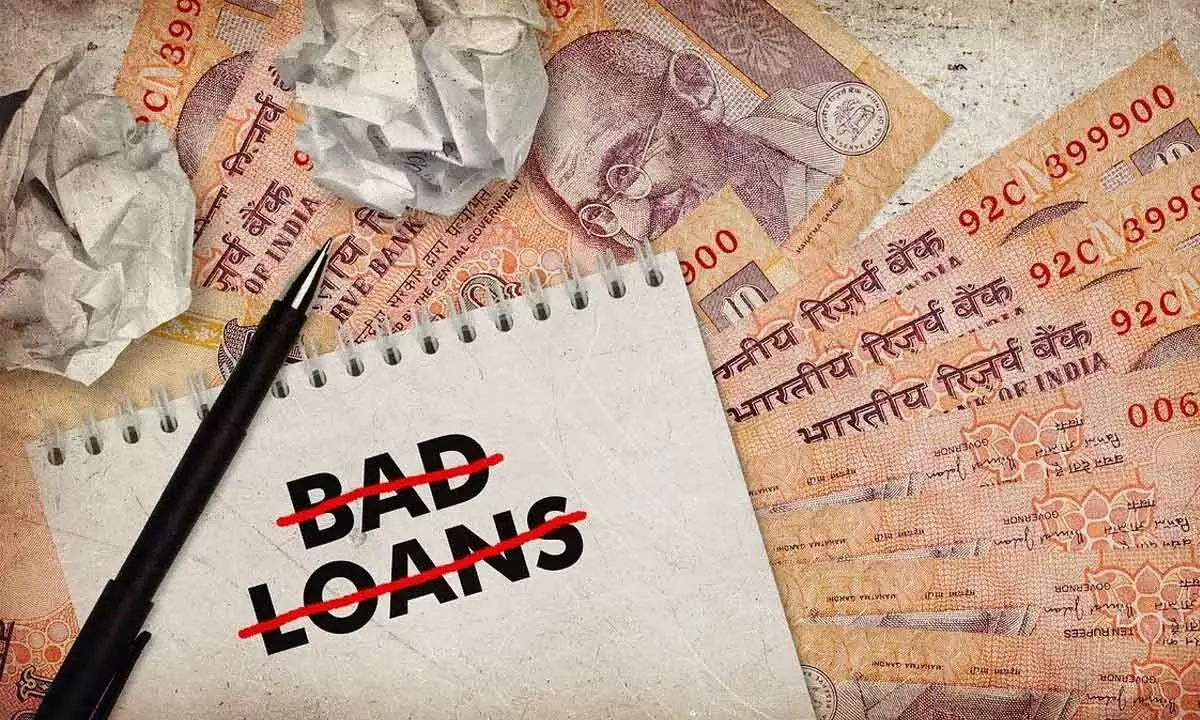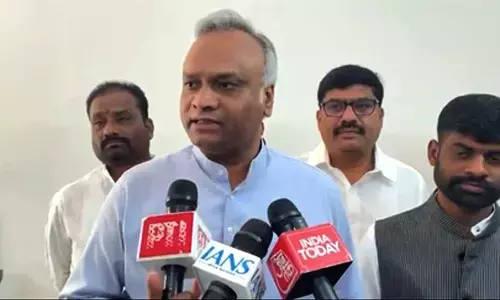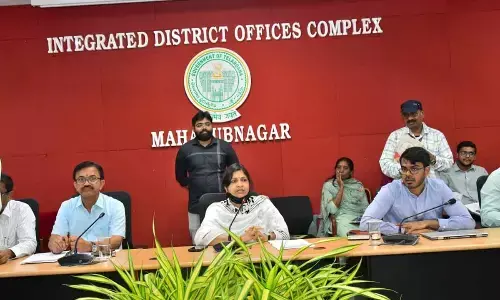Frauds, wilful defaults drowning banks

The alarming rate at which the non-performing assets (NPAs) that have exponentially increased, particularly with the public sector banks (PSBs), have shaken the confidence of the public at large in the banking system. Further, the situation has been compounded by persons like Nirav Modi (Rs 14,356 crore), Mehul Choksi (Rs 11,300 crore) who defrauded the Punjab National Bank, Vijay Mallya (Rs 9,900 crore) and many others on the PSBs and other banks.
After a high of Rs 9.66 lakh crore in 2017-18, the accretion to NPAs has seen a decreasing trend. In 2020-21, there was an accretion of Rs 4.8 lakh crore to NPAs. By the end of the 3rd quarter in 2021-22, the new accretion of NPAs amount to Rs 4.5 lakh crore. This amount includes data relating to public sector and private sector banks, foreign banks and small finance institutions as on December 31, 2021, as per RBI DBIE statistics in response to an RTI query.
The PSBs burdened themselves with NPAs which account for a major share of the total gross NPAs. In 2020-21, the NPAs of PSBs constituted around 72% of the total, with the private sector banks, foreign banks & small financial institutes accounting for the rest. The situation has become so grave that it may result in wiping out the capital base of some of the banks. The financial collapse of Infrastructure Leasing & Financial Services (IL & FS) with a cumulative debt burden of Rs 91,000 crore to various financial institutions made the situation worse.
The NPAs of some of the banks indicate that it would take some time before the situation can be brought under control. The State Bank of India had the highest value of Gross NPAs amounting to Rs 1,12,023.37 crore as on March 2022 (Net NPAs Rs 27,965.71 crore). The Net NPAs of PNB amounted to Rs 34,908.73 crores as on March 22. Indian Overseas Bank had Net NPAs of Rs 4,148 crore. It has to be noted that during the past 8 years IOB wrote off Rs 41,392 crore. The UCO Bank had Net NPAs worth Rs. 3,315.78 crore as of March 2022. Central Bank of India had NPAs of Rs. 6,675.17 crore and they have written off bad loans worth Rs 9,514 crores as of October 2022. The IDBI Bank had NPAs of Rs. 28,722 crore in September 2022 (Net NPAs at Rs 1,687 crore). Out of Rs.11,000 crore, IDBI technically wrote off Rs 4,000 crore and transferred Rs 7,000 crore to National Asset Reconstruction Co., Ltd., (NARCL).
The Finance Minister in reply to a Parliament Question on 20.12.2022 stated that total NPAs written off as bad loans amounted to Rs 11.17 lakh crores from their books in the last six years till financial year 2021-22.
One of the turning points in Indian banks' NPA story is the drive launched by Raghuram Rajan as the Governor of the RBI to dig out the dirt from their balance sheets. If left unattended, the NPAs had the potential to drive the Indian economy to a bottomless chasm at some point. The rot was running so deep that it could turn fatal to the entire body at some stage-sooner or later. Crony capitalists thrived in these technical adjustments since they were still eligible to borrow even more from the same banks or other banks, unless tagged as defaulters.
It was Rajan who insisted that banks shouldn't postpone today's problem to tomorrow and worsen it. The RBI withdrew regulatory forbearance on restructured loans, making it mandatory for banks to make provisions on restructured loans at par with bad loans and forcing them to set aside 15 per cent of the loan amount as provisions if they chose to go for fresh restructuring. Earlier, banks used to conveniently push many stressed loans, especially in the infrastructure segment, to the restructured loan category to prevent them from slipping into the NPA category.
The RBI under Rajan forced banks to have a clear roadmap to clean up their balance sheets. He set a deadline for banks to clean up their books. This scenario is likely to lead to a crisis situation in the banking sector, especially PSBs, if these banks fail to find sufficient capital to refill their coffers."
With his forced exit, from the RBI, one has to wait and watch whether the target set up by Rajan would be achieved or would go by default.
The losses suffered by many banks could affect the capital base of some of the banks. In the recent past, some of the biggest banks in the US, the UK and other countries in the EU faced serious financial crises because of financial irregularities, fiscal indiscipline, corruption, etc, leading to exposure.
It was Rajan who took the first steps to identify and initiate measures to stem the rot in the banking system. He introduced new tools to check and identify the NPAs with the banks in general and the PSBs in particular. A large loan database — Central Repository of Information on Large Credit (CRILC) was created that included all loans over Rs. 5 crores which the RBI shared with all the banks. The CRILC data included the status of each loan reflecting whether it was performing or already an NPA or going towards NPA. That database allowed Banks to identify early warning signs of distress in a borrower such as habitual late payments to a segment of lenders.
The next step was to co-ordinate the lenders through a Joint Lenders' Forum (JLF) once such early signals were seen. Incentives were given to Banks for reaching quick decisions.
The third step was to stop restructuring of unviable projects by Banks who wanted to avoid recognizing losses — RBI ended the ability of Banks to restructure projects without calling them.
RBI together with SEBI introduced the Strategic Debt Restructuring (SDR) scheme so as to enable Banks to displace weak promoters by converting debt to equity. The timeline was indicated to find a new promoter for the projects for which Banks extended loans. All those tools created a resolution system that replicated an out of court bankruptcy. The Asset Quality Review (AQR) was completed in October 2015 and subsequently shared with Banks who sought to accomplish.
RBI have also co-ordinated with SEBI to increase penalties for wilful defaulters (Raghuram G Rajan in "I do what I do" published by Harper Business).
The Reserve Bank of India on June 13, 2017 identified 12 major accounts for initiating insolvency proceedings with each of them having over Rs 5,000 crores of outstanding loans, accounting for 25 per cent of total NPAs of banks. It set up an Internal Advisory Committee (IAC) to advise with regard to the cases that may be considered for reference for resolution under the Insolvency and Bankruptcy Code (IBC).
The Financial Stability Report (FSB) released by the RBI for the period 2018-19 stated that macro-stress tests indicate that under the base line scenario of current macro economic outlook, for scheduled commercial banks, the gross NPAs (GNPA) may increase from 11.6% in March 2018 to 12.2% in March 2019.
The India Ratings and Research, the domestic rating agency has estimated that the banking system has Rs. 7.7 trillion of unrecognized stressed loans in the corporate and SME Sector and expects around 35% of them to slip into NPA category in the next 12 to 18 months (Report dated 17.5.2016). PSBs led by the State Bank of India and Punjab National Bank, which has a group account for two third of banking assets, are saddled with US$ 150 billion in stressed loans.
Wilful defaulters have the Insolvency and Bankruptcy Code and National Company Law Tribunal to give them an easy way out. They can pay just a small part of what they actually owe banks during arbitration proceedings. This would almost amount to day-light loot of the people's money. The above scenario would reveal that all is not well with the fiscal and monetary policies of and the Finance Ministry may have to accept vicarious responsibility. NPAs is a new mantra adopted to save the big fish culprits from stressed loans.
The larger pond of defaulters and their NPAs is more alarming and it could destroy the banking system and have an adverse impact on depositors. India has the fifth highest NPAs globally – the first four are Portugal, Italy, Ireland and Greece.














